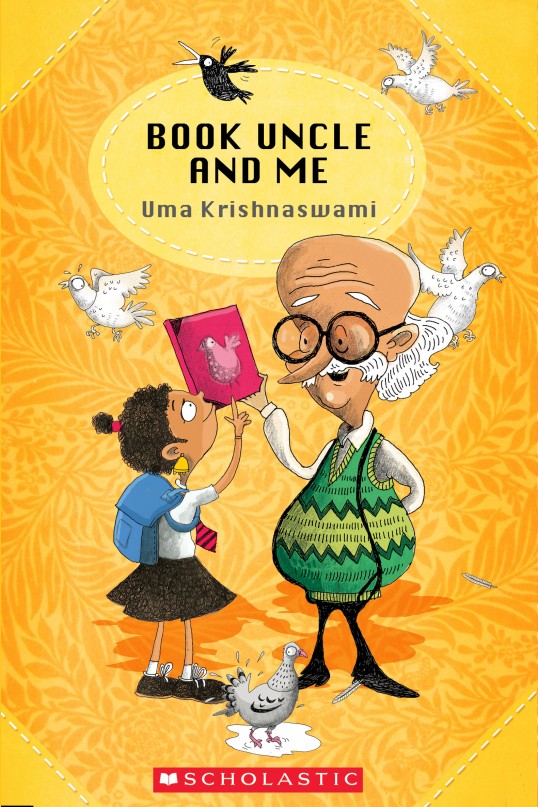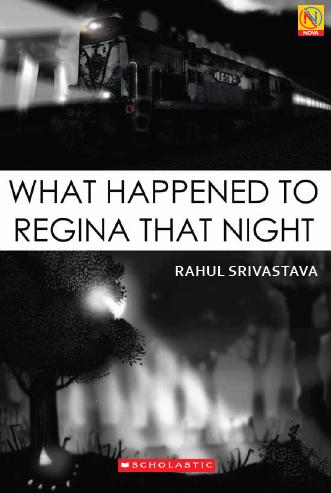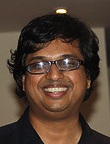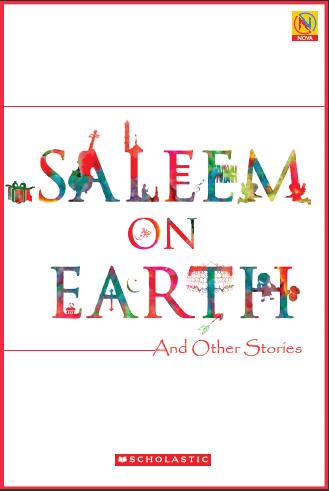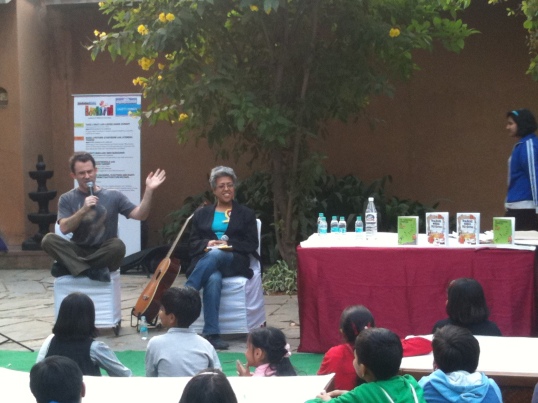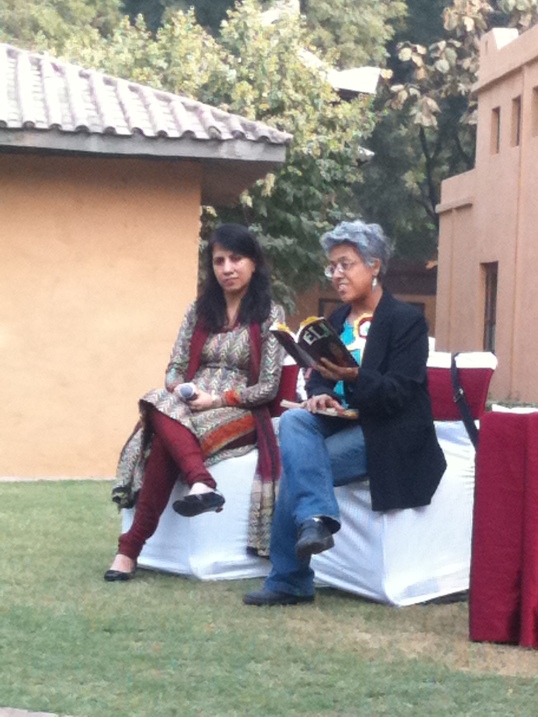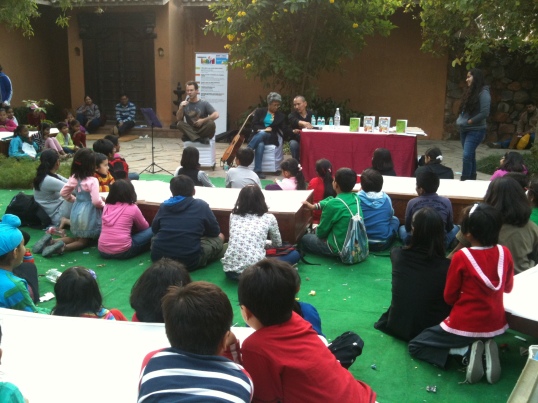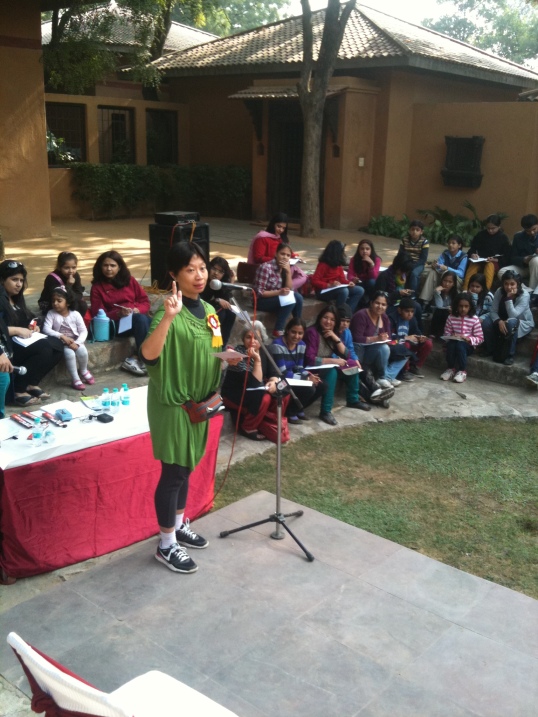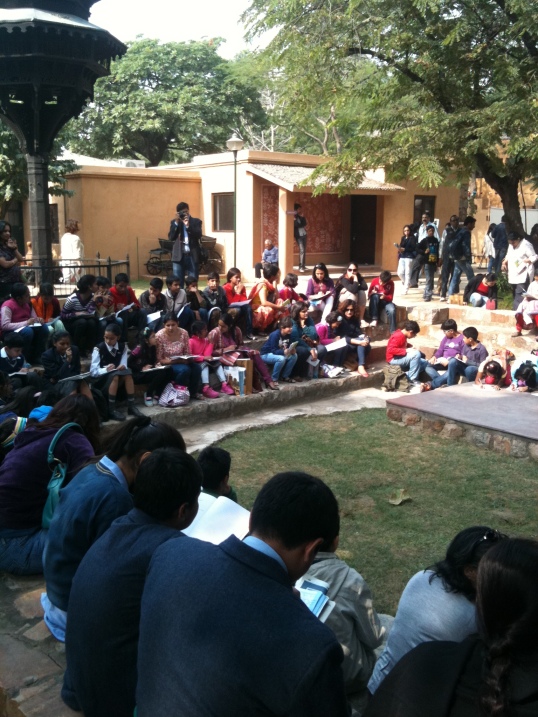Oh yes, you heard right! This Book Makes No Sense: Nonsense Rhymes and Worse has been finally unleashed on the world by Michael Heyman and his fellow nonsense crusaders, and they were aided in this mission by none other than ace illustrator Priya Kuriyan. 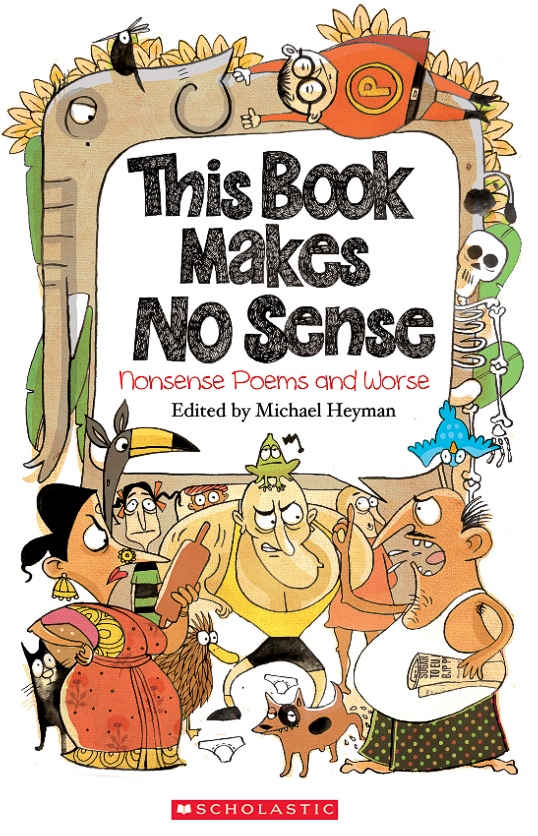
This book is the only place where you will find the suzerains of nonsense literature joining forces with a bunch of extremely talented contemporary writers to rid the world of sense (yes, that evil thing) and fill it with the daffiest, goofiest, dippiest and dottiest of characters and creatures that only get curiouser and curiouser with each page. Sukumar Ray’s duckupine, Samit Basu’s contemplative super-dog, Kaushik Vishwanath’s runaway pants, Edward Lear’s monstrous cummerbund and Sampurna Chattarji’s enigmatic Bong Tree are only a few of the oddities you will encounter as you sing and dance (pausing every now and then to exclaim with delight at Ms. Kuriyan’s illustrations) through the book.
Here’s what Michael Heyman, the mastermind behind This Book Makes No Sense, has to say about the genre of literary nonsense –
Do you solemnly swear that This Book Makes No Sense makes absolutely no sense whatsoever? Not even a shred of it?
Michael: This book makes no sense in the same way that its title makes no sense. Of course, it does and it doesn’t. And the moral of the story is never, never trust authors.
Nonsense literature is actually a careful balance between sense and non-sense, which is what makes it artful, and technical, and hilarious, and trenchant, and silly, and subversive—none of which would be possible with gibberish, or pure non-sense.
Why does the world need a book that makes no sense?
Michael: The world made no sense long before the book did. What does a person mean, exactly? How about a giraffe? Things just are, and that “areness” is quite absurd if looked at in terms of our trying to have meaning and purpose for everything. Alan Watts, the great Zen philosopher, writes, “What do you think the universe is doing, anyway? What are trees all about? What are giraffes about, what are rhinoceroses about, what are cats about? Is theirs a serious purpose?”
Now, the absurdist looks at this absurdity and weeps—but the nonsense artists sees the same things—and laughs, dances, sings.
When and how did you get interested in literary nonsense?
Michael: In the early 90s I was doing an MPhil in English Romantic Studies at Oxford, and while I wandered lost in Xanadu I came across Edward Lear as an almost-kinda-Romantic, associated with the genre of literary nonsense. I thought how amazing and rebellious it would be to be the very first scholar of nonsense literature, and while such lofty visions danced like pluperfect sugar plums in my big plumperfect head, I realized rather quickly, after a quick library search, that there was already a significant field of nonsense scholarship dating back to the 19th century. Still—it seemed so rich and so silly a field that I couldn’t resist. To the consternation of Oxford, I bent my MPhil towards Lear and haven’t looked back since.
How is nonsense different from gibberish or parody?
Michael: Gibberish, or something with little or no meaning, may be a small element of the genre, but it’s clear from any nonsense text you might choose that there is much that does make sense, though which elements do or do not make sense depends on the piece. Pure parody is sense, and while most nonsense has a parodic element, it tends to go beyond parody. Take Lewis Carroll’s “parodies” in Alice books for instance, such as “You are Old Father William” or the White Knight’s song, “A-Sitting on a Gate.” Carroll makes nonsense out of both Southey and Wordsworth (the two poets he “parodies” here), but I’d say that his nonsense goes beyond mere parodic commentary on the originals. It becomes something in itself, a new nonsense creature. Of course, we can never forget the originals, and so there will always be an ambiguous (and thus incompletely meaningful) relationship.
Do you have an all-time favourite verse?
Michael: Nope. But be careful with the question. Nonsense is not just verse—it can be prose (and some of the best is), and thus stories, novels—but also songs, games, recipes, alphabets, and much more. Nonsense is a kind of parasite that inhabits other forms. It thrives on form and can accommodate itself to many. My favourite nonsense writers (aside from the obvious) are Edward Gorey, Sukumar Ray, Carl Sandburg, and Mervyn Peake.
How difficult was your quest for Indian nonsense literature? Did you find many people stoutly denying the existence of such a genre?
Michael: Ha! I did indeed. To this day, there are those who deny “nonsense” in their tradition (and not just in India). But this is usually because they don’t understand that nonsense literature is not non-sense, that it has a respectable pedigree, that it comes from rigorous traditions, and that it functions in significant ways, ways that change the world. As Shelley said, “Nonsense poets are the unacknowledged legislators of the world.” Or something like that (remember what I said about trusting authors). And when Vinda Karandikar, the great, recently-departed Marathi poet, denied that he wrote nonsense, his wife leaned in and said of course he did. And, with a little explanation, he admitted it too–and was proud.
The quest for nonsense in India, which spanned primarily from 2001-2007, was a huge challenge—and something that I could never have done alone. I relied on the expertise of generous nonsensical souls whose love for this kind of literature was the only thing that sustained them through the ups and downs of the project. Anushka Ravishankar, Sampurna Chattarji, Anita Vaccharajani and many more…
What kind of nefarious activities do you like to engage in when you’re not writing or editing nonsense?
Michael: Felonious flower-flopping.
Arb-straching in the mungalay (now, with more arb!)
Parching
Long walks on the beach
Read more about Michael’s exploits here – http://tenthrasa.blogspot.com.

